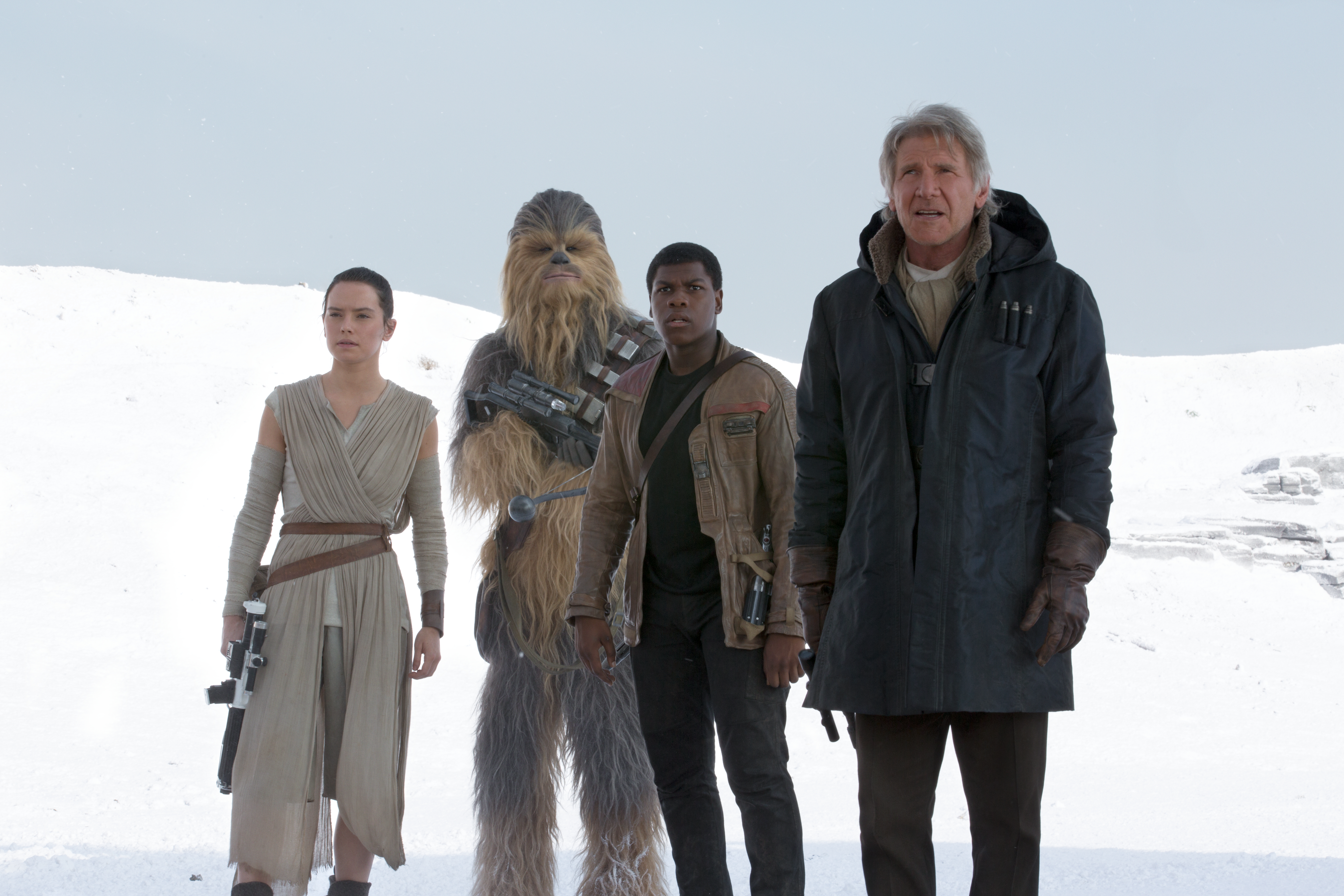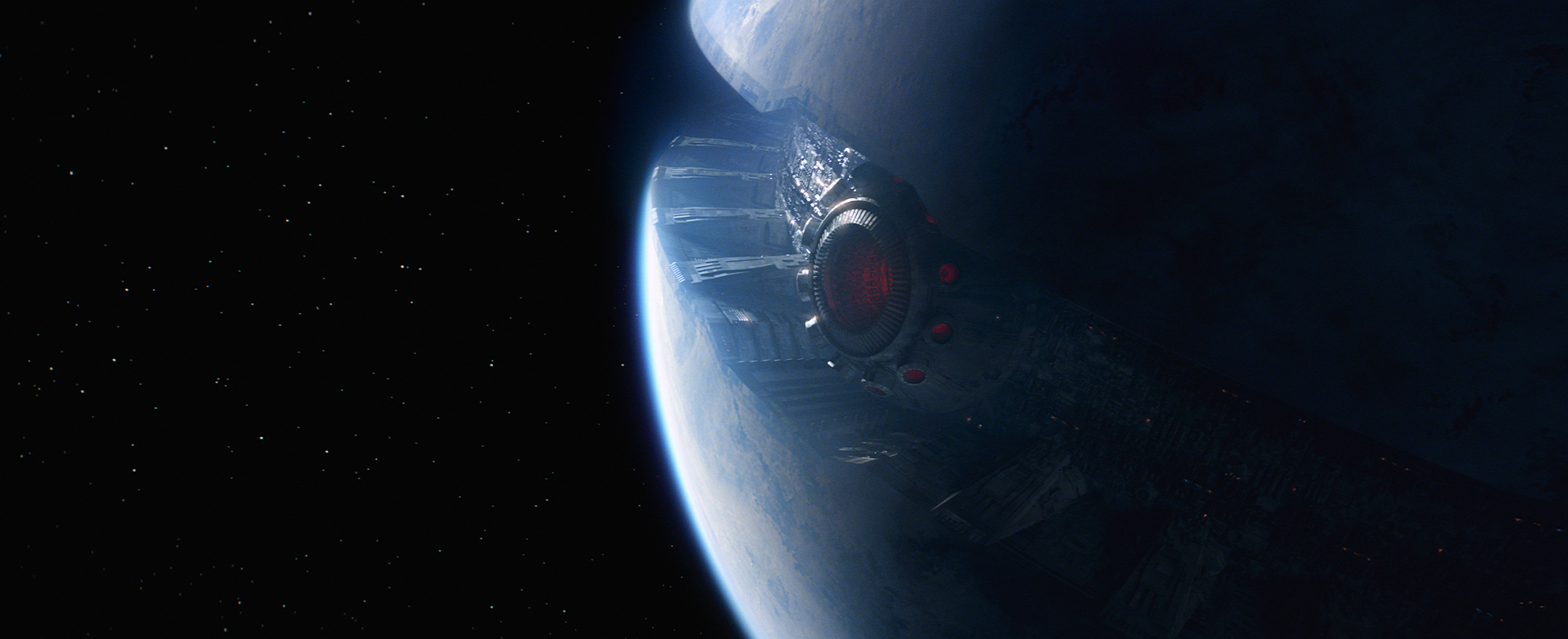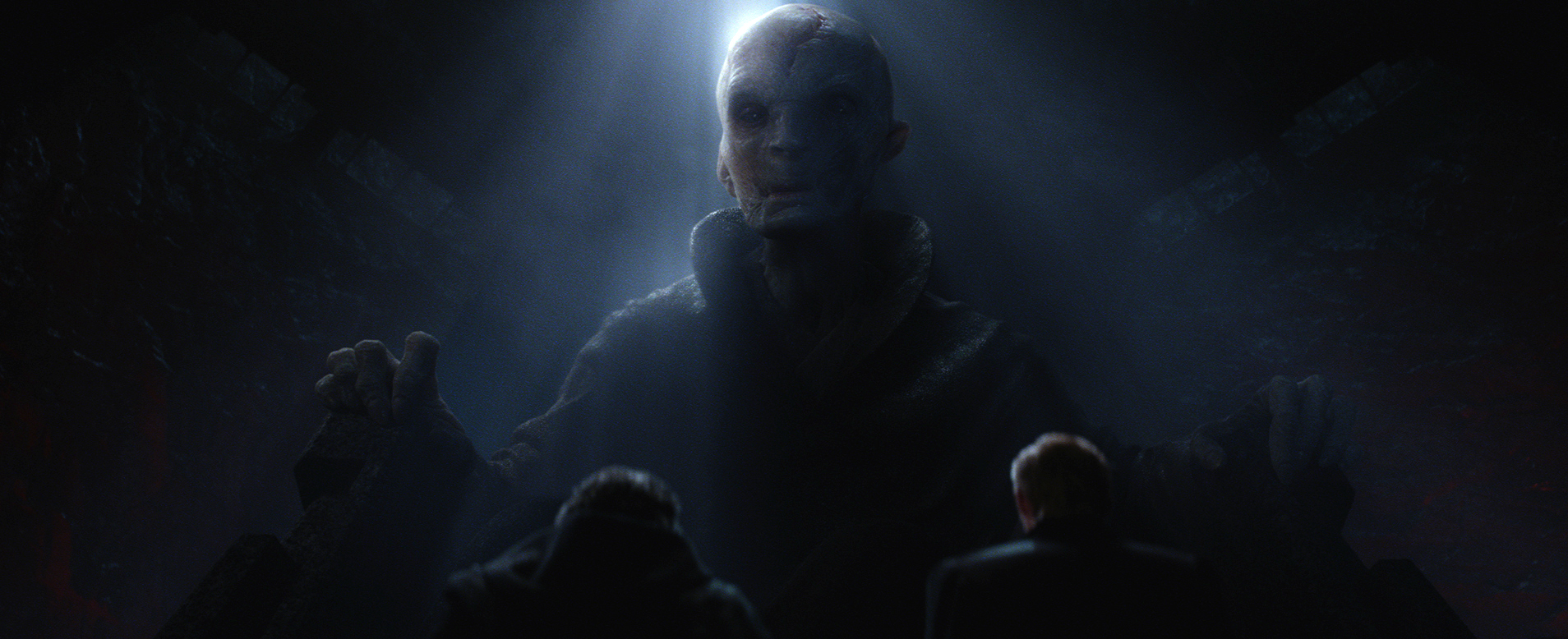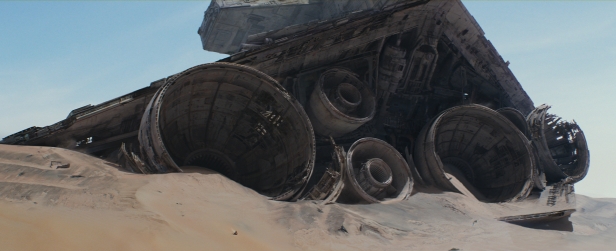How did your involvement with The Force Awakens come about?
It started with a press release! I worked George [Lucas] way back in 1995 through about 2002, and I never thought I’d have the opportunity to work on Star Wars again. So when I read the press release like everybody else, I contacted my friend and mentor, Rick Carter, who had a close relationship with Kathleen Kennedy to say, “Hey, have you heard about this?” and that started a whole chain of events where Rick then called Kathy to enquire about it, and we were both very interested in being involved somehow with the movie.
These were still very early stages in terms of what the film was going to be, and fortunately Kathy was very warm to the idea of getting Rick and myself on board to kick-start the design process. From there it just kept going and going.
What were your main responsibilities on the film itself?
I really wanted to come back and be a designer again, because for the past ten years or so I’ve been a production designer for [Robert] Zemeckis, and I really didn’t have a chance to design, so when Star Wars came up I really wanted to get back in the trenches, so to speak, and just design. So I was really looking forward to just being a concept artist, working with Rick Carter. Rick at that time wasn’t sure if he was going to be a production designer either, so really in the early days we were just helping to provide inspirational art to kick-start the design and story conversations.
As the film evolved, I took on the role to help guide the art and design process with the San Francisco team. Rick was the overall production designer who oversaw all the artists, but I was kind of his right-hand designer on the San Francisco side.
It’s clear that attempts were made to retain tone of the original trilogy while at the same time creating something new. What were the biggest challenges of this?
That was actually the biggest attraction to me! I grew up loving the original trilogy and admiring Ralph McQuarrie and Joe Johnston, and when I worked with George [Lucas] on the prequel trilogy, George wanted to try a whole new aesthetic to complement the design history. So for us, when Episode VII came about we knew it was going to be taking place after VI. We weren’t sure how long, but we knew the designs were going to tie in very closely to the original designs, and that was really exciting for me, because I love the classic designs, that brutal WW2 look, so we went back to the source material, looked at Ralph McQuarrie’s original sketches, and there was so much to draw on, because working with George for over seven years, he just loves to create a whole new universe, and then he takes maybe five per cent of what we’ve designed. That was very similar to what Ralph and Joe Johnston were doing.
Looking back through the archives, Ralph had such an incredible design history on Star Wars that were never used, so we used that as a starting point to ground the foundation for Episode VII, and we knew that JJ [Abrams] was also a huge fan of V and VI, and because the film happens after VI, we have to make that design continuity work. So our inspiration was really to go back and use Ralph to project forward from there to see what the look of VII would be.

You designed the concept art for the fallen Star Destroyer on Jakku. How did the idea for that come about?
That was in the early stages. We were just trying to come up with cool, iconic imagery that could be very Star Wars. Early on we were trying to explore, “Okay, what kind of ecosystem can we explore that will be new and fresh?” Of course, we already have sand and snow, so we thought, “What about a water planet?” and then we thought, “Maybe there was a space battle, and on this water planet we have crashed Star Destroyers.” So that started a whole chain of exploration where we were just trying to come up with this visually creative imagery, things that we want to see.
For instance, I like the idea of Star Destroyers in unfamiliar but familiar environments, like Earth. So we started playing with the idea of, “Maybe there’s this Star Destroyer crashed in the ocean, and it’s a giant wreck.” When you do imagery like that, you start to create a story so the audience automatically asks, “What is the history of that?” And that’s one of the powerful things about Star Wars: behind the visual veneer, there are layers and layers of history that we can always go back to and explain.
Even those stories were never explained in the film, all that design work is there, and so that was kind of the starting point: “Let’s ground this in something interesting.” Eventually that evolved to be a desert planet, and we started to create back stories: “Okay, what happened to have these giant Star Destroyers and Rebel cruisers, what could have happened years ago that would allow this to happen?” For me, I just loved the idea of putting big technology against nature. I’m a huge wildlife and western painting fan, and I like to create high-tech and contrast it with natural elements.
A lot of the original trilogy was inspired by westerns, samurai epics and suchlike. Aesthetically speaking, what were the inspirations for the visual design of The Force Awakens?
It was very much like that. Story wise and visually, there was a lot of source material – classic films that we derived from – and we used them mostly for inspiration on classic compositions, because there’s something very powerful about the visual language of creating drama in an image that helps the story. It’s something that Ralph McQuarrie did quite a lot, and something I learned a bit from George as well: we always try to capture in one image what the drama is, and the best case is to look at historical references, whether they are films or archival photographs. There’s so much to derive from. You don’t have to reinvent things from scratch; you can ground it in real-life history.
The tone in The Force Awakens is almost post-apocalyptic at times. Is this something you were going for?
Yeah, again that goes back to the idea of giving design a sense of history, and there’s a reason for it looking the way it does. It’s a hallmark of what we as designers to make an image believable, because you really have to do that. George said it best when he said he considered Star Wars a documentary film, and what you’re doing is basically telling your story in a very exotic background. All the elements of the environment, they all make sense, because they have their inherent history, but you never explore that, so for instance, when we’re looking at a foreign film it’s very much the same way – exotic, but you’re not really explaining any of the background or characters in terms of why they look the way they do, but if you want to go into it you can explain it, so that’s why we designed for Star Wars a very comprehensive visual history, because ultimately that then grounds the film and narrative. It may be an intuitive thing where it looks and feels very real, and you get the sense that it’s very believable and you’re not creating an artificial world for cinema.

From the concept art to big screen, what would you say changed the most during that process?
Most of it! In the early days we had several months of blue-sky exploration to help inform the story. This was even before JJ [Abrams] came on board, so for a lot of it we were just exploring ideas. Jakku changed a lot in going from a water planet to a cold desert to ultimately this sort of isolated gas-station outpost. The characters all changed a bit: for Kylo Ren, originally there was this vague idea that he was going to be our new villain, but we didn’t have a back story, and so we explored quite a bit in terms of making him a Vader-like character. That’s the great thing about having these design processes evolve with the story: we get to explore in that process as well.
And what changed the least?
We try to be very true to Star Wars – A New Hope was really our guideline – and the mandate was literally we were designing sets and vehicles as if we had built it in the Seventies. Our version of the film was ‘we point the camera the other way instead of where George was shooting’, and that was our guideline. So a lot of the design cycle was grounded in that process already, so the Star Wars visual vocabulary changed very little.
It was story-specific in terms of, say the third act: what is this new threat, what is this new planetary weapon? And to be honest, that evolved quite a bit, because that started with a fragment of an idea of, “How can we create a new weapon that is even more powerful than the Death Star?” and my initial take was “Star Wars has done a moon, how about we make it into a planet?” There was a piece of art in the Art Of The Force Awakens book, where we had the Death Star dish and just stuck it onto a planet. In a quite curious way it validated the idea, but it also pointed out that we had a lot of homework to do to ensure that idea worked, and that the whole design philosophy of ‘why would they do that’ would make sense.
So Starkiller Base was one of the design elements that evolved quite a bit, because we were trying to make sure that it made sense in the Star Wars universe.
What was the approach to CGI characters in The Force Awakens? Did the less than favourable reception for the prequel characters inform your approach in any way?
Yes and no. The art team were very nostalgic, and we really wanted to inspire from the old techniques, doing puppetry and things, but part of the design process was really pushing that aside, not worry about technique and execution and just come up with this iconic design. For Maz Kanata, it was a case of early on, we knew it wouldn’t be a guy in a costume, because the way the character was being evolved in the story just didn’t allow that.
The original discussion was “Should it be a puppet? Should it be a CGI character? Can we get the nuanced performance we need out of a puppet, or does it need to be enhanced with CG?” So those were always in the back of our minds, but as we designed, it was really to capture the essence of “What was JJ looking for in this character?” And we chased that for quite some time. Maz is one of the characters that evolved quite a bit, because she’s such a special character to JJ that we really had to nail the emotional impact. The character meant a lot to JJ and the story.

Was the aura of mystery that surrounds Supreme Leader Snoke intentional?
That was referenced off an early Ralph McQuarrie concept piece where in The Empire Strikes Back, there was a sketch Ralph did of Vader talking to a hologram of the Emperor, who was a gigantic hologram, and the imagery was just a giant pair of lips, so we were just going for what Ralph had captured in these rough sketches, so we thought, that imagery was never used, but it was still very powerful, and we wanted to update it for ours.
How has working with directors like JJ Abrams and Gareth Edwards compared to George on the prequels and originals?
It’s a fascinating question, because that’s what I love about the Star Wars universe: you can have many points of view, and you would think that designing Star Wars would become very comfortable after a while, but when you get visionary designers like JJ and Gareth, they each bring in their own point of view, and that really keeps me as a designer on my toes, because I’m trying to model the design of the universe to fit the director’s vision, because ultimately it’s told from a very specific point of view.
That’s the kind of challenge I like, because even though we’re working in Star Wars, JJ’s take is very different from Gareth’s take, and Rian Johnson’s as well, and so it’s this wonderful thing where you’re actually making the Star Wars universe feel more alive, real and comprehensive by working with great talent like JJ and Gareth.
Star Wars: The Force Awakens is available to buy on DVD and Blu-ray now. Read our review here, and watch our video review here. For more news about the biggest movies, pick up the new issue of SciFiNow.
